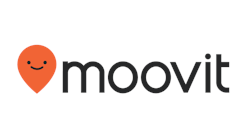Be My Eyes and Moovit Join Forces to Make Public Transit More Accessible
Public transit is an integral part of urban metropolitan areas and relied upon by millions of citizens. Blind or low vision transit riders are frequently uncertain that they’ve caught the right train or that the bus they’re waiting for will take them where they need to be. Be My Eyes and Moovit want to challenge obstacles relating to vision and access to make traveling individually with public transit more accessible for blind and visually impaired people.
By joining forces with Be My Eyes, the world’s biggest online blind community and experts in visually assisting their blind users, sharing knowledge within the areas of public transportation and accessibility is made possible. Moovit has already kickstarted the journey by making its app more accessible, in partnership with blind developer Adi Kushnir. VoiceOver and TalkBack are now available on every screen and with the addition of the Live Directions feature, blind and low vision users can get step-by-step GPS-style guidance for their journey and even receive alerts when their bus is arriving or when their desired stop is approaching.
As part of the partnership, Moovit users will be able to easily navigate to Be My Eyes through a simple tap on the More Menu. This means that if they require any additional help during their journey, like finding their seat for example, it’s even easier to access and will make the journey even smoother.
Moovit VP of Global Communications Steve Swasey said, “We have taken many steps to ensure the Moovit app is accessible for users with blindness or vision loss, and we are always delighted to work with like-minded companies such as Be My Eyes to create a seamless experience for these transit riders.”
Be My Eyes Community Director Alexander Hauerslev Jensen said, “Be My Eyes believes that accessibility should be factored into every new idea or project. Transportation is a new venture that we’re thrilled to collaborate on with Moovit, it means a big step forward for inclusion and accessibility.”


